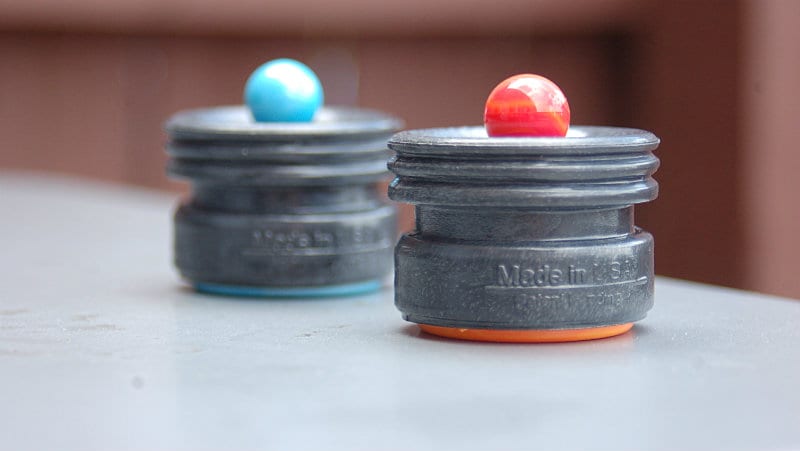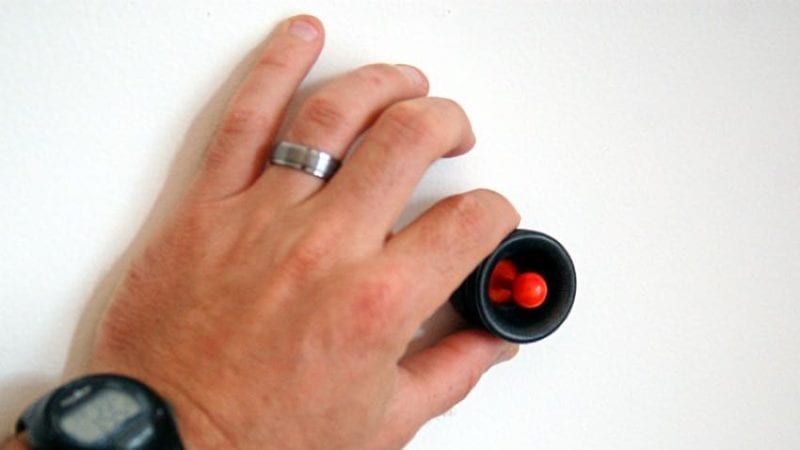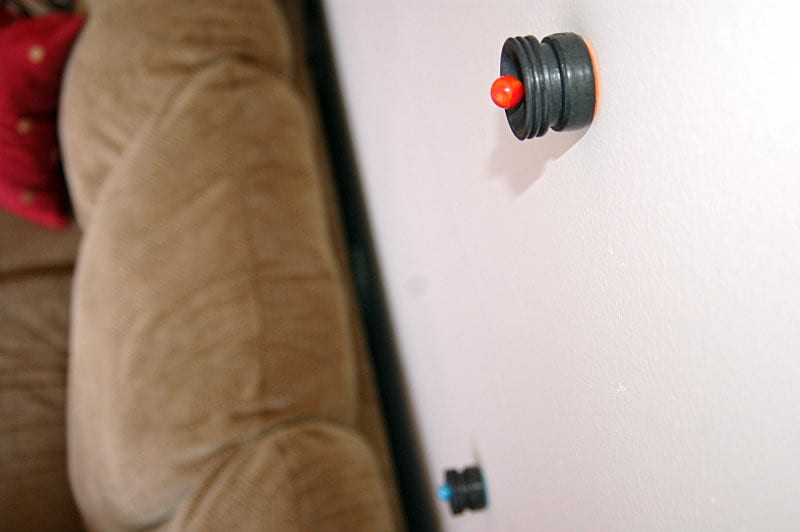StudPops Create a Stir at PTR Headquarters
“Don’t judge a book by its cover.” How many times have we heard that from our parents, friends, coworkers, and even media sources? It seems that I am guilty once again. When I was first approached about the StudPop magnetic stud finder, I thought it was a cute toy that might not really be classified as a tool. I even took a closer look at the StudPop website before agreeing to anything. After forcing myself to get past the inherent cuteness of the thing, I found that the theory made pretty good sense. So I contacted John over in Kennebunk, Maine to see about getting one in my hands.
Editor’s Note: Check out our best stud finder article for our top picks!
A New OLD Type of Stud Finder
A quick note about John—he’s the inventor of the StudPop with a background in corporate engineering and general handyman work. Combine the two and you get John the Inventor who thinks with the no-nonsense approach of a handyman and the complexity of an engineer. He’s also REALLY excited about the StudPop. All that said, I asked for one… and he sent me eight.
That’s a good thing since the package was opened before I arrived, and it was obvious how popular they immediately were. It wasn’t just our staff, it was also our wives and kids that had StudPops all over the wall looking for, and finding, studs in all kinds of colors. Clearly, they work, and it’s simple enough for a second grader to easily grasp how to use them (thanks for getting the testing done early for me guys!) Let’s dig just a little deeper, though.
StudPops Features and Design
The basic concept is a colored piece of plastic forms a base under a black plastic housing. That housing keeps the moving colored plastic piece (which resembles the game pieces in “Sorry” and acts as an indicator) in place and contains a rare earth magnet. It’s a very simple design that could easily be made on a 3D printer.
Using StudPops in the Field
To use StudPops, simply run a tight zigzag pattern along the wall. When it comes across a nail in a stud, the indicator will stand up and you’ll feel the pull against it. I tried it against drywall and plaster. The unit will stick against drywall pretty easily. I was able to detect studs in plaster without much issue, but the magnet wasn’t strong enough to stick against the wall there. While I didn’t test it against them, John tells me that it will work against tile and lathe as well.
On materials where the unit will stick in place, using two StudPops will allow you easily see the path of the stud without guessing. On other surfaces, you can still make a mark on the wall to work from.
StudPops can be found on Amazon for between $9 and $13 with free shipping. You even get to choose the color (I’m using blue and orange, of course!).
Final Thoughts
The StudPop is a simple and intuitive tool that overcame my initial skepticism. It’s not a replacement for wall sensors or thermal cameras, but for the homeowner that needs a quick stud finder, the StudPop is a solid choice.





